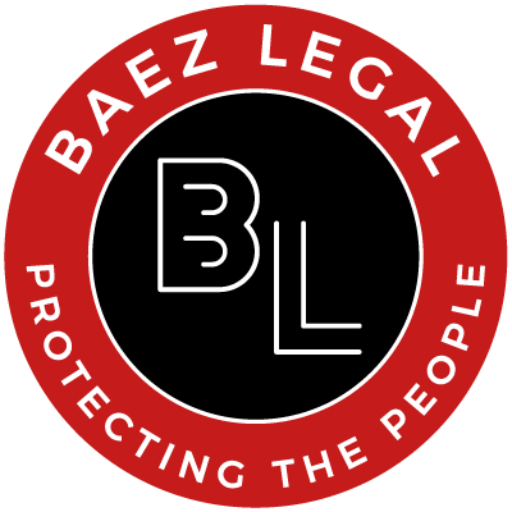If you’ve been injured in a pedestrian accident in New York City, accurately documenting your injuries and medical treatment is crucial for building a strong legal case. Whether you’re seeking compensation for medical expenses, lost wages, or pain and suffering, thorough documentation can significantly impact the outcome of your claim. As a pedestrian accident attorney in NY, Baez Legal emphasizes the importance of proper documentation to support your case effectively.
Why Accurate Documentation is Essential
Documenting your injuries and medical treatment serves several critical purposes:
- Proves the Extent of Your Injuries: Detailed records provide evidence of the nature and severity of your injuries, helping to establish a direct link between the accident and your medical issues.
- Supports Your Claim for Compensation: Comprehensive documentation helps substantiate your claim for damages, including medical expenses, lost wages, and pain and suffering.
- Strengthens Your Case: Well-maintained records bolster your credibility and can make it easier for your pedestrian accident attorney in NY to negotiate with insurance companies or present your case in court.
Steps to Document Your Injuries and Medical Treatment
1. Seek Immediate Medical Attention
- Visit a Healthcare Provider: After the accident, seek medical attention as soon as possible. Even if you believe your injuries are minor, a thorough examination by a healthcare professional is essential. Some injuries may not be immediately apparent but can develop into serious conditions if left untreated.
- Document Your Visit: Obtain copies of your medical records, including the initial diagnosis, treatment plan, and any follow-up visits. Ensure that all injuries and symptoms are recorded.
2. Keep Detailed Medical Records
- Medical Reports: Collect and preserve all medical reports, including emergency room records, hospital stays, and reports from specialists.
- Treatment Receipts: Keep receipts for any out-of-pocket expenses related to your medical treatment, such as prescription medications, physical therapy sessions, and medical equipment.
- Diagnostic Images: Request copies of any diagnostic images, such as X-rays, MRIs, or CT scans, which can provide visual evidence of your injuries.
3. Maintain a Pain and Suffering Journal
- Daily Log: Start a daily journal to record your pain levels, physical limitations, and emotional distress. Note how your injuries affect your daily life, work, and relationships.
- Detailed Descriptions: Include specific details about how your injuries impact your ability to perform everyday activities and any changes in your quality of life.
- Professional Observations: If possible, have your healthcare provider document your pain and suffering and any limitations caused by your injuries.
4. Document Communication with Healthcare Providers
- Medical Appointments: Keep a log of all medical appointments, including dates, times, and the names of healthcare providers you see.
- Treatment Plans: Ensure that you have a written record of your treatment plans and any recommendations for follow-up care.
- Correspondence: Save any correspondence with your healthcare providers, including emails, letters, and notes from phone calls.
5. Gather Evidence from the Accident Scene
- Accident Report: Obtain a copy of the police report from the accident, which can provide official documentation of the incident.
- Witness Statements: If there were witnesses to the accident, get their contact information and statements about what they saw.
- Photos: Take photographs of the accident scene, including any visible injuries, vehicle damage, and the surroundings. This visual evidence can help establish the context and impact of the accident.
6. Track Your Recovery Progress
- Follow-Up Visits: Keep records of all follow-up visits and any changes in your condition. This includes ongoing treatments, rehabilitation, and any new symptoms that arise.
- Medical Updates: Update your medical records regularly to reflect any changes in your condition or additional treatments you may require.
How Your Pedestrian Accident Attorney in NY Can Help
An experienced pedestrian accident attorney in NY, such as those at Baez Legal, can assist you in organizing and presenting your documentation effectively. They will:
- Review Your Records: Ensure that all necessary documentation is complete and accurate.
- Gather Additional Evidence: Help gather additional evidence, such as expert opinions and accident reconstruction reports, to strengthen your case.
- Negotiate with Insurers: Use your documented evidence to negotiate with insurance companies and seek fair compensation for your injuries and losses.
- Represent You in Court: Prepare and present your case in court if necessary, using your documentation to support your claims.
Reach Out to Our Pedestrian Accident Attorney in New York
Accurate documentation of your injuries and medical treatment is vital for supporting your personal injury claim after a pedestrian accident in New York City. By following these steps and maintaining detailed records, you can ensure that your case is well-supported and increase your chances of receiving fair compensation. If you need assistance with your pedestrian accident claim, contact Baez Legal today to discuss how we can help you navigate the legal process and achieve a successful outcome.
